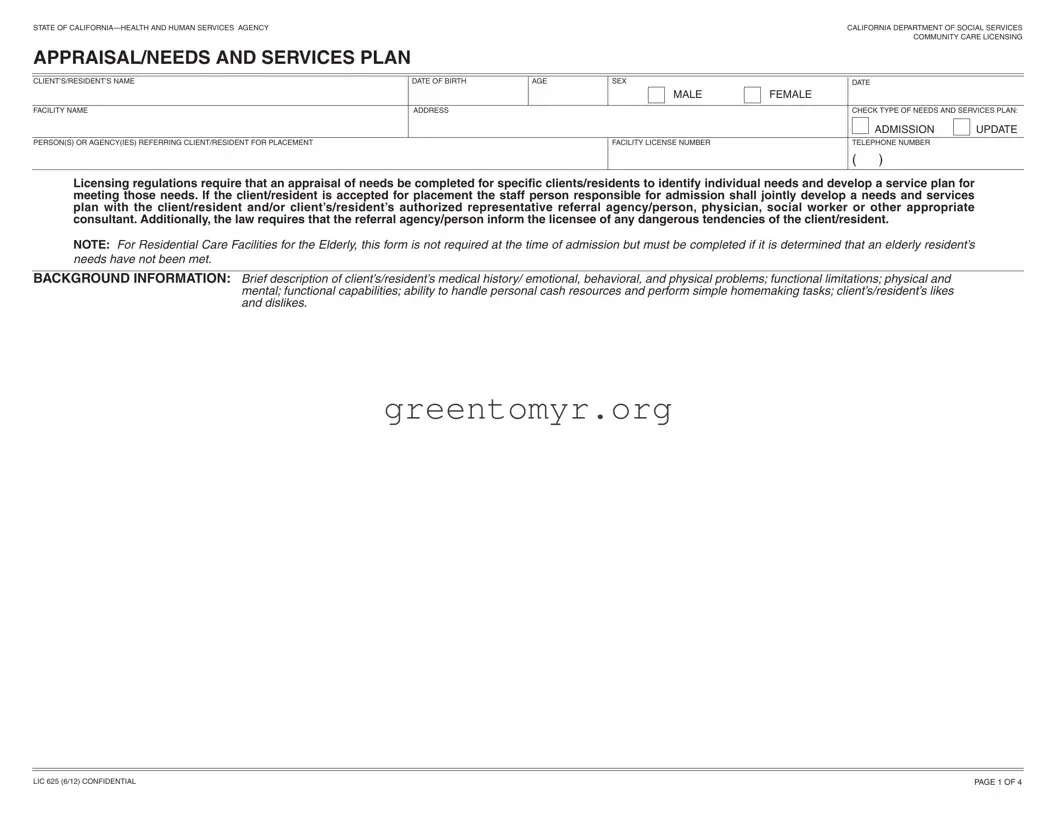Understanding the LIC 625 form is essential for anyone involved in the care of individuals placed in various residential settings, particularly in California. This form, developed by the California Department of Social Services, plays a critical role in assessing and documenting the specific needs and service plans of clients or residents. It includes vital information such as the client's or resident's name, date of birth, age, and sex, as well as details about their medical history and personal preferences. The necessity for this assessment arises from licensing regulations aimed at ensuring that every individual receives proper support tailored to their unique circumstances. The form is initiated either upon admission or during updates and takes input from various sources, such as referral agencies, physicians, and social workers. Such collaboration is crucial, especially when addressing any potentially dangerous tendencies of the client. A detailed needs and services plan is created alongside the resident or their representative to outline objectives and responsibilities for care. This ensures a comprehensive approach to their well-being and adjustment in the facility. Through careful evaluations and updates, the LIC 625 form not only helps caregivers track progress but also fosters a sense of security and understanding for those they support.




